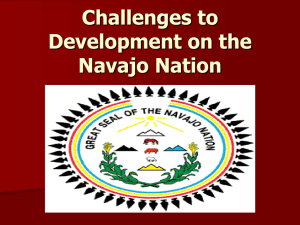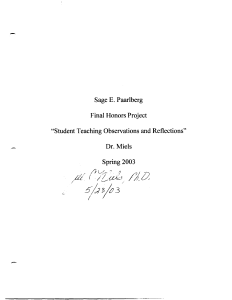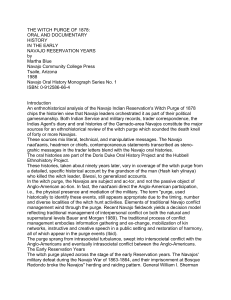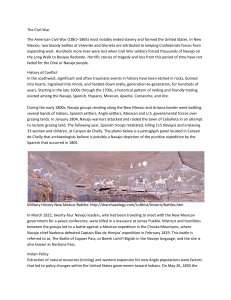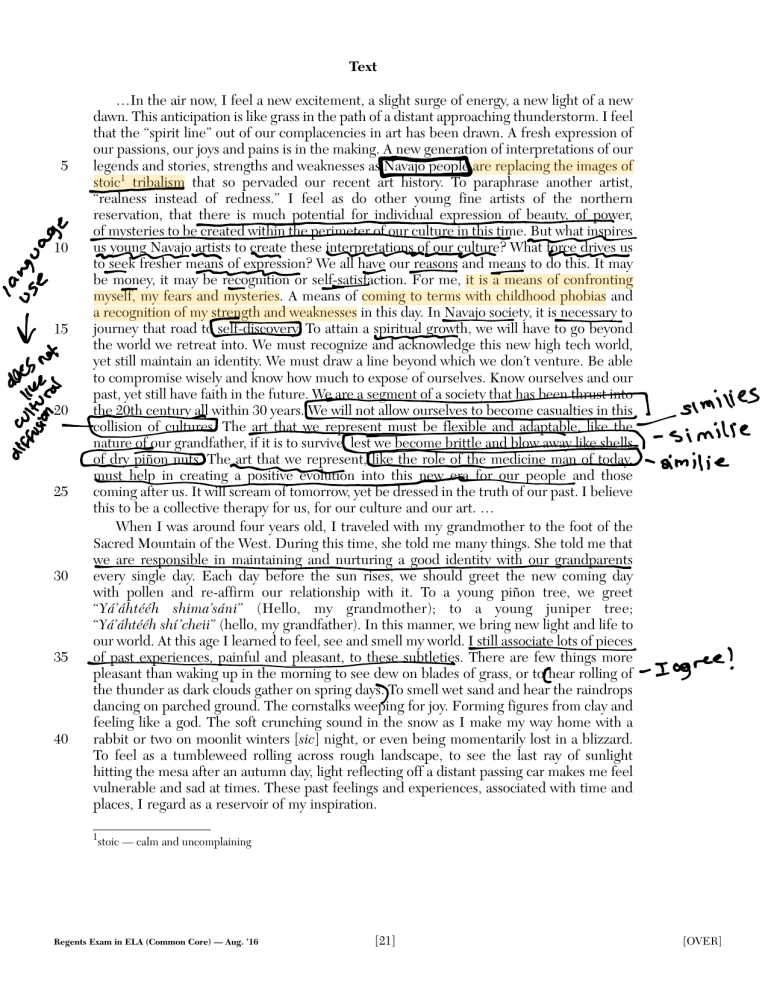
Text 5 10 15 20 25 30 35 40 …In the air now, I feel a new excitement, a slight surge of energy, a new light of a new dawn. This anticipation is like grass in the path of a distant approaching thunderstorm. I feel that the “spirit line” out of our complacencies in art has been drawn. A fresh expression of our passions, our joys and pains is in the making. A new generation of interpretations of our legends and stories, strengths and weaknesses as Navajo people are replacing the images of stoic1 tribalism that so pervaded our recent art history. To paraphrase another artist, “realness instead of redness.” I feel as do other young fine artists of the northern reservation, that there is much potential for individual expression of beauty, of power, of mysteries to be created within the perimeter of our culture in this time. But what inspires us young Navajo artists to create these interpretations of our culture? What force drives us to seek fresher means of expression? We all have our reasons and means to do this. It may be money, it may be recognition or self-satisfaction. For me, it is a means of confronting myself, my fears and mysteries. A means of coming to terms with childhood phobias and a recognition of my strength and weaknesses in this day. In Navajo society, it is necessary to journey that road to self-discovery. To attain a spiritual growth, we will have to go beyond the world we retreat into. We must recognize and acknowledge this new high tech world, yet still maintain an identity. We must draw a line beyond which we don’t venture. Be able to compromise wisely and know how much to expose of ourselves. Know ourselves and our past, yet still have faith in the future. We are a segment of a society that has been thrust into the 20th century all within 30 years. We will not allow ourselves to become casualties in this collision of cultures. The art that we represent must be flexible and adaptable, like the nature of our grandfather, if it is to survive, lest we become brittle and blow away like shells of dry piñon nuts. The art that we represent, like the role of the medicine man of today, must help in creating a positive evolution into this new era for our people and those coming after us. It will scream of tomorrow, yet be dressed in the truth of our past. I believe this to be a collective therapy for us, for our culture and our art. … When I was around four years old, I traveled with my grandmother to the foot of the Sacred Mountain of the West. During this time, she told me many things. She told me that we are responsible in maintaining and nurturing a good identity with our grandparents every single day. Each day before the sun rises, we should greet the new coming day with pollen and re-affirm our relationship with it. To a young piñon tree, we greet “Yá’áhtééh shima’sáni” (Hello, my grandmother); to a young juniper tree; “Yá’áhtééh shí’cheii” (hello, my grandfather). In this manner, we bring new light and life to our world. At this age I learned to feel, see and smell my world. I still associate lots of pieces of past experiences, painful and pleasant, to these subtleties. There are few things more pleasant than waking up in the morning to see dew on blades of grass, or to hear rolling of the thunder as dark clouds gather on spring days. To smell wet sand and hear the raindrops dancing on parched ground. The cornstalks weeping for joy. Forming figures from clay and feeling like a god. The soft crunching sound in the snow as I make my way home with a rabbit or two on moonlit winters [sic] night, or even being momentarily lost in a blizzard. To feel as a tumbleweed rolling across rough landscape, to see the last ray of sunlight hitting the mesa after an autumn day, light reflecting off a distant passing car makes me feel vulnerable and sad at times. These past feelings and experiences, associated with time and places, I regard as a reservoir of my inspiration. 1 stoic — calm and uncomplaining Regents Exam in ELA (Common Core) — Aug. ’16 [21] [OVER] 45 50 55 60 Like most young Navajos my age, we spent many winter nights gathered around our father, listening to stories passed down through generations. We sat in expectation as we journeyed up from the womb of the Mother in creation stories. We sat mesmerized by coyote stories. Laughing at his antics and frightened by his cruelties. We sat in awe as First Man and First Woman brought forth life upon the Fourth World. We journey back from the west, the home of Changing Woman, into the midst of the Four Sacred Mountains after the creation of our clans. “Slayer of Enemies” and “Born for Water,” the hero and savior of the fourth world, came alive for us these nights. I felt the pain of their fathers’ testing in the roaring fire of the hearth. Their war with the Monster Gods raged as the snow storm dusted outside our door, snow sifting through the cracks of the door. Shadows leaping on cribbed wall of the hooghan2 brought to life the animal beings as the shoe game was created. As the nights wore on, the youngest ones of us fell asleep where we sat. My mother’s spindle scratching the floor set the tempo of these late night journeys…back. From these sources I draw my inspirations. I am humbled by its beauty and strengthened by its power. With great respect, I relive this in every creation, every all-night Blessingway chant and every vision of glory upon this land. With good intentions, I recreate this in every piece of art: intentions of preserving and passing on, intentions of sharing and inviting all good-willed people for the sake of us as American Indians in general, as Navajos in particular and the beauty of our culture. This culture through art, in whatever form, however expressed, will endure. … —Shonto W. Begay excerpted from “The View From The Mesa: A Source of Navajo Creativity” Anii Ánáádaalyaa’Ígíí (Recent ones that are made), 1988 Wheelright Museum of the American Indian 2 hooghan — traditional dwelling of the Navajo people Regents Exam in ELA (Common Core) — Aug. ’16 [22]

